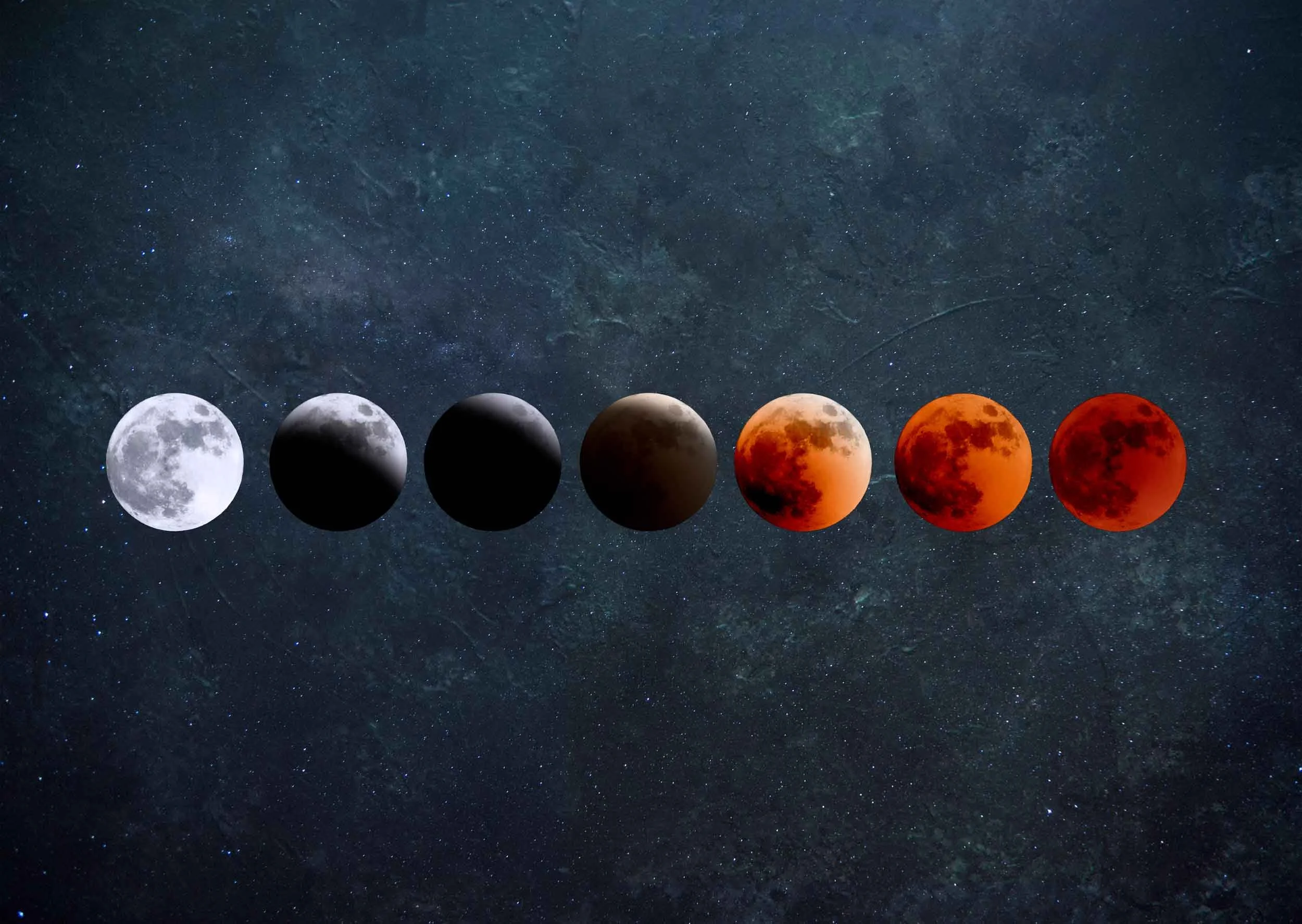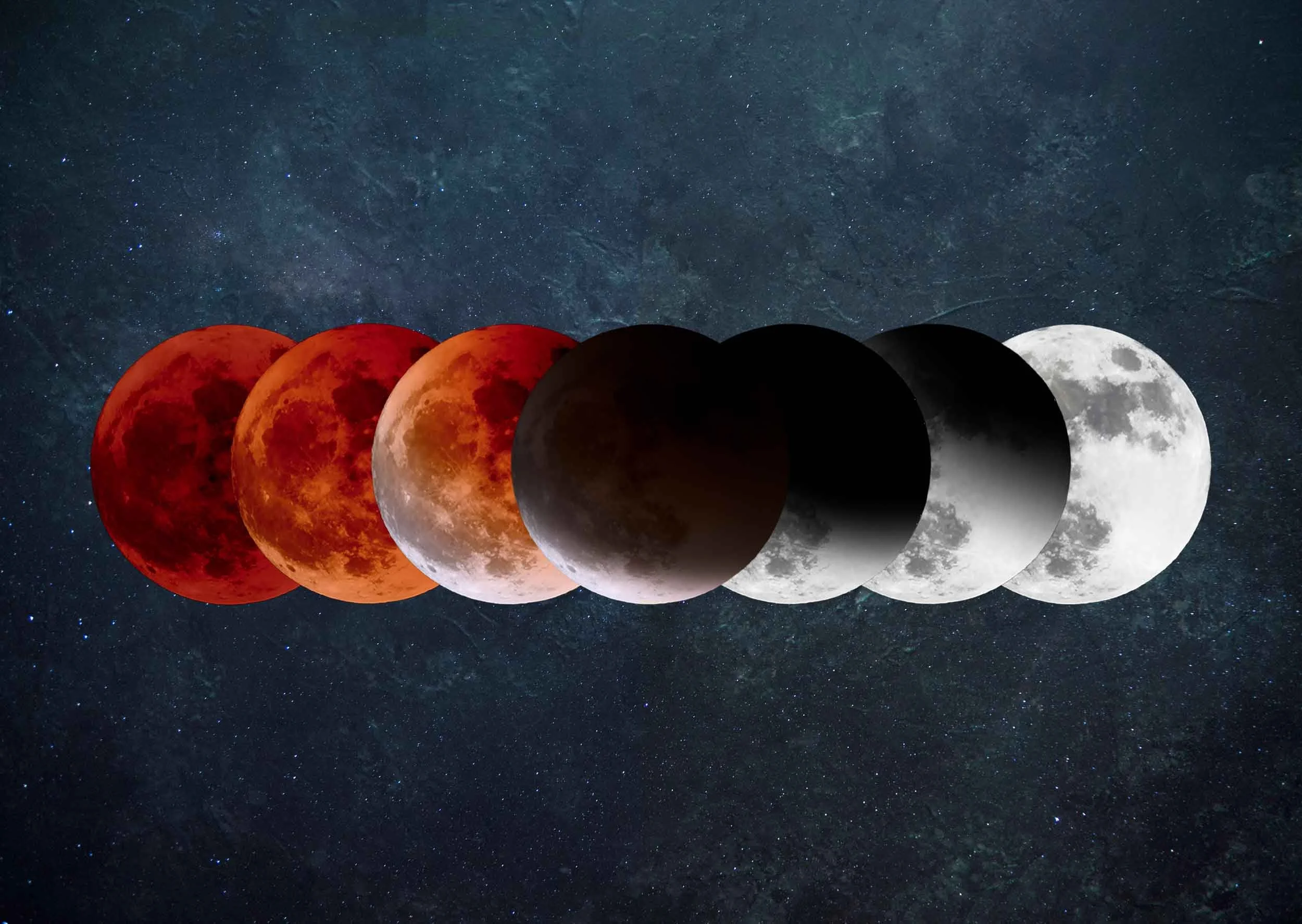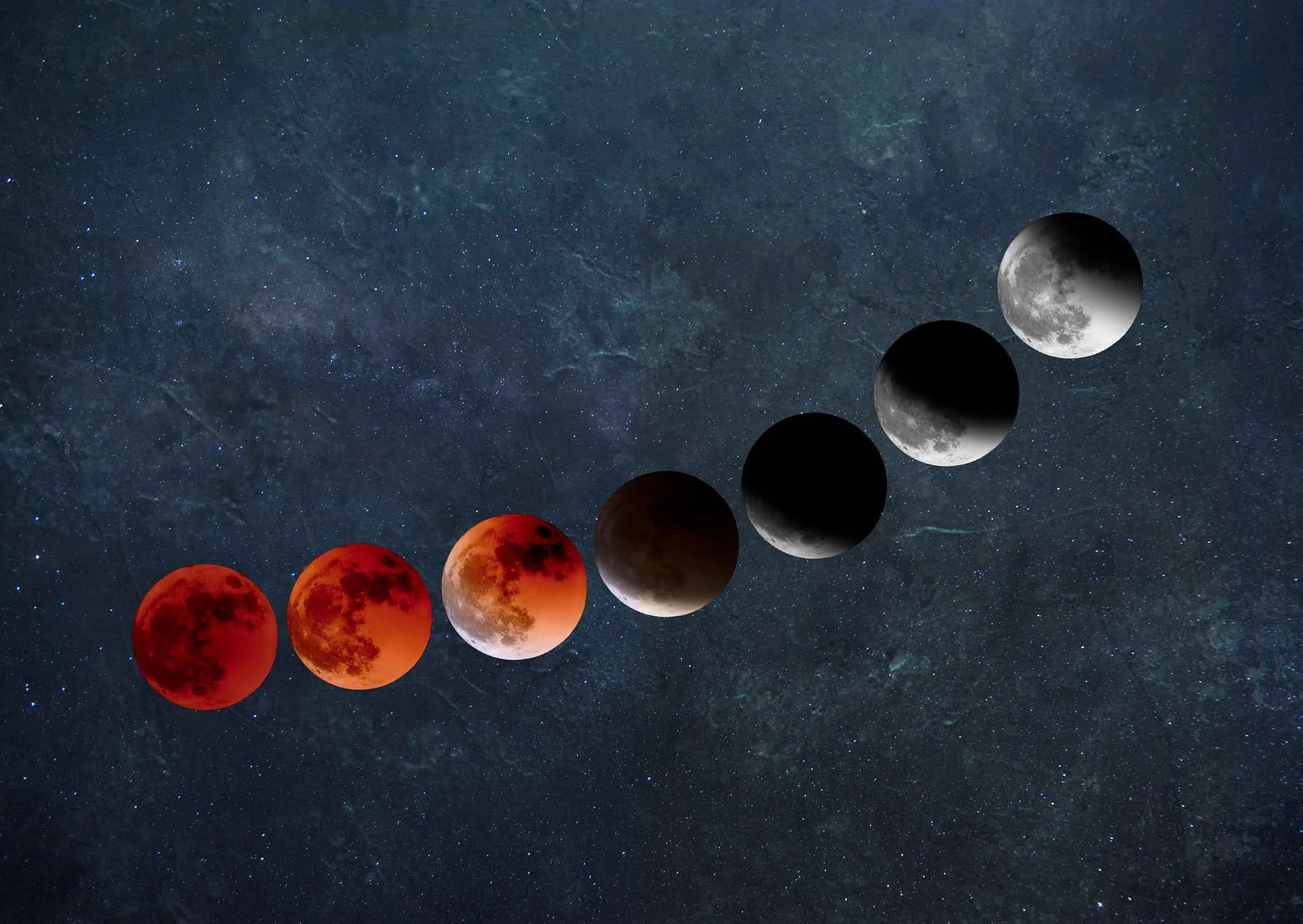Blood Moon Lunar Eclipse
Table of Contents

The night of July 27th, 2018, was unlike any other night. The sky was clear, the air was crisp, and the moon was about to perform a rare and spectacular show. The 'blood moon' total lunar eclipse was about to occur, and I was determined to capture it on camera. I set up my equipment and waited patiently as the moon slowly disappeared behind the Earth's shadow. As the eclipse progressed, the moon turned a deep red colour, creating an eerie and magical atmosphere. The entire process lasted for 1 hour and 43 minutes, and I was in awe throughout the whole experience. It was a once-in-a-lifetime event that I will never forget.
What is a Blood Moon?

A blood moon is a captivating astronomical phenomenon that occurs during a total lunar eclipse. This event takes place when the Earth positions itself directly between the Sun and the Moon, resulting in the Earth casting its shadow across the lunar surface. As the Moon enters the shadow, it transforms, taking on a striking reddish hue. This distinct colouration is primarily due to the scattering of sunlight through the Earth's atmosphere, a process known as Rayleigh scattering, which filters out the shorter blue wavelengths and allows the longer red wavelengths to reach the Moon.
Observers are often enchanted by the sight of the blood moon, which has not only captivated skywatchers but has also held significant cultural and symbolic meaning across various civilisations throughout history. From ancient myths to modern interpretations, the blood moon remains a source of fascination, drawing attention from both casual observers and seasoned astronomers alike.
Why does the Moon turn Red during a Lunar Eclipse?
The phenomenon occurs during a total lunar eclipse, a remarkable event that captures the attention of skywatchers worldwide. As the Moon moves into the Earth's shadow, it experiences a dramatic reduction in light. The Earth blocks direct sunlight from reaching the Moon, causing it to appear dimmer and darker than usual.

Nonetheless, the Earth's atmosphere plays a critical role in this transformation. It functions as a massive lens that bends and refracts sunlight. When the sunlight passes through the atmosphere, the shorter wavelengths of light, those in the blue and green spectrum, are scattered in various directions due to Rayleigh scattering. This scattering effect is similar to why we see blue skies during the day.
Consequently, the light that successfully reaches the Moon consists primarily of longer-wavelength red and orange hues. These wavelengths are less affected by atmospheric scattering, allowing them to penetrate the Earth's atmosphere more effectively. As a result, the Moon is bathed in a stunning reddish-orange glow, often described as a celestial spectacle that enchants those fortunate enough to witness it. This captivating event not only highlights the interplay between light and atmosphere but also reminds us of the intricate dance of celestial bodies in our solar system.
The Seven Stages of the Luna Eclipse
The Blood Moon reminds us that even in darkness, light is never truly gone; it waits to return, illuminating new beginnings. As we reflect on this rare celestial event, may its energy continue to guide us toward growth, resilience, and transformation.
Thank you for taking the time to reflect on this journey. I’d love to hear what the Blood Moon means to you; feel free to share your thoughts in the comments or connect with me on social media.
